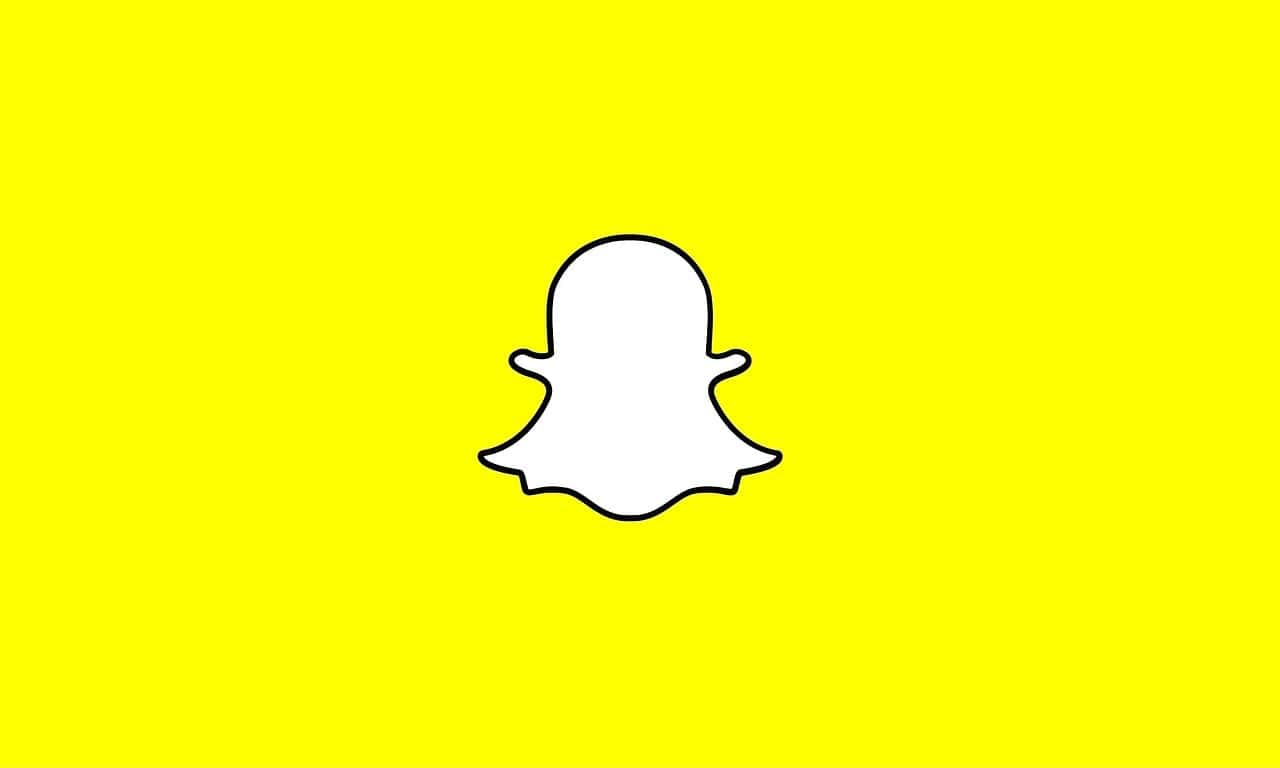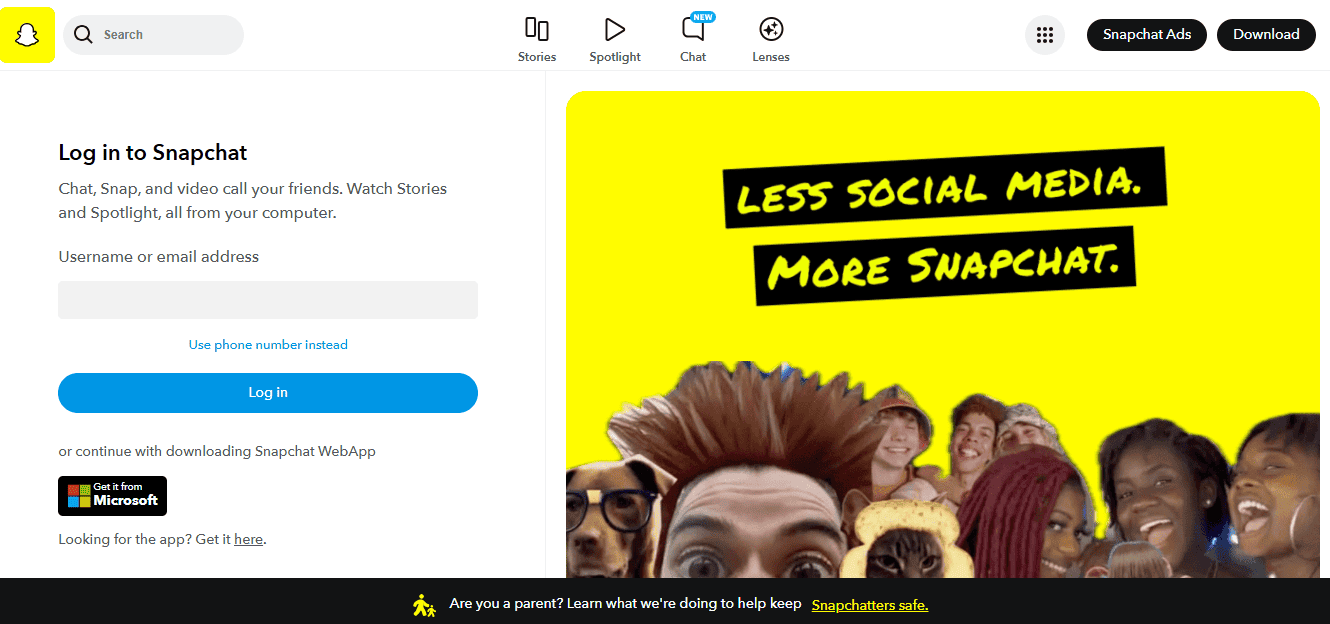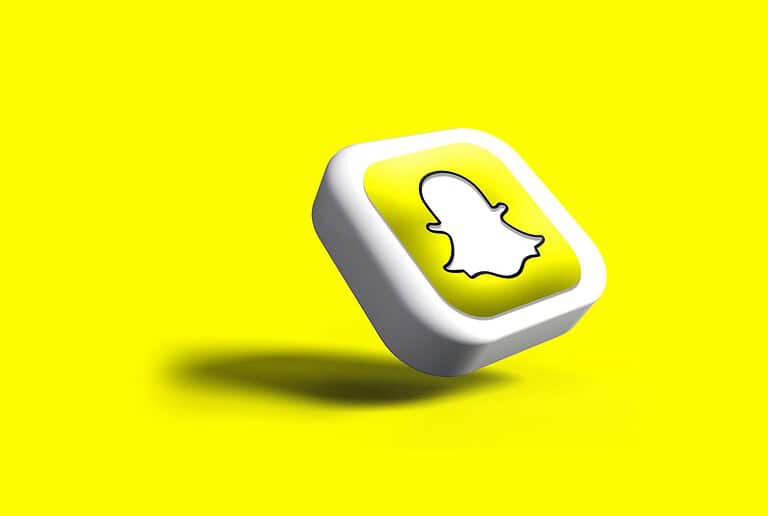
Snapchat started as a small social media platform based out of a dorm room in 2011, and took off like a rocket ship. Three Stanford University students – Evan Spiegel, Reggie Brown, and Bobby Murphy – created the app. Snapchat’s core concept of disappearing messages transformed digital communication and social sharing.
The app has undergone significant changes since its inception. It started as a simple photo-sharing platform with self-destructing images. Now, Snapchat offers a wide range of features including video sharing, Stories, augmented reality filters, and even original content.
Snapchat continues to innovate and adapt to user preferences. Recent additions include Snap Map for location sharing, Spotlight for short-form video content, and enhanced AR capabilities. These updates aim to keep Snapchat competitive in the ever-changing social media landscape.
From Dorm Room Project to Social Media Giant

Snapchat, the popular social media platform known for its disappearing messages and playful filters, has a fascinating history. It began as a simple idea among college friends and quickly evolved into a global phenomenon, changing the way we communicate and share our lives online.
The Birth of an Idea
Snapchat was born in 2011 at Stanford University. Evan Spiegel, Bobby Murphy, and Reggie Brown were students who came up with the idea for an app that would allow users to send photos that would disappear after a few seconds. They called it Picaboo, and it was initially met with skepticism. However, the concept of ephemeral messaging quickly caught on, especially among young people who wanted a more casual and private way to share moments with friends.
When Did Snapchat Come Out
Snapchat was originally released on July 8, 2011 as an iOS-only app called Picaboo:
| Details | |
|---|---|
| Name | Picaboo |
| Release date | July 8, 2011 |
| Platform | iOS |
| Location | Evan Spiegel’s father’s home |
The app was relaunched as Snapchat in September 2011. Snapchat is an American instant messaging app that allows users to share multimedia content that disappears after a short time.
The idea for Snapchat was originally brought to Evan Spiegel by Reggie Brown, a Stanford student. Brown and Spiegel then recruited Bobby Murphy, who had coding experience, to help develop the app.
Snapchat’s popularity grew after its launch due to its ability to send disappearing photos with filters. As of the third quarter of 2024, Snapchat has 443 million daily active users worldwide.
Rise to Popularity
Picaboo was later renamed Snapchat and began to gain traction. The app’s unique features, such as disappearing messages, filters, and lenses, set it apart from other social media platforms. Snapchat’s focus on visual communication and playful interactions resonated with a younger audience, and it quickly became one of the most popular social media apps in the world.
Evolution and Innovation
Over the years, Snapchat has continued to evolve and innovate. It introduced Stories, a feature that allows users to share a collection of photos and videos that disappear after 24 hours. It also added Discover, a platform for media companies to share content, and Snap Map, a feature that allows users to see the location of their friends on a map. Snapchat has even ventured into hardware with the introduction of Spectacles, sunglasses with built-in cameras that can record videos.
Snapchat Today

Today, Snapchat boasts millions of daily active users worldwide. It remains a popular platform for communication, self-expression, and sharing everyday moments. Despite facing competition from other social media giants, Snapchat continues to innovate and adapt, ensuring its place in the ever-changing landscape of social media.
Snapchat Milestones:
| Year | Event |
|---|---|
| 2011 | Picaboo (later renamed Snapchat) is launched by Stanford University students. |
| 2013 | Stories feature is introduced. |
| 2015 | Discover platform and Lenses are launched. |
| 2016 | Snap Inc. goes public. Spectacles are introduced. |
| 2017 | Snap Map is launched. |
| Present | Snapchat continues to evolve with new features and innovations. |
Introduction:
Key Takeaways
- Snapchat was founded in 2011 by three Stanford students
- The app evolved from disappearing photos to a multi-feature platform
- Snapchat constantly adds new features to stay competitive
Origins and Founders
Remember when disappearing photos were a novel idea? Snapchat, the app that made “snaps” a part of our vocabulary, has come a long way since its early days. From a college project to a social media giant, Snapchat’s journey is a fascinating story of innovation, evolution, and the changing ways we connect online.
Snapchat’s creation stemmed from a college project that quickly evolved into a global social media phenomenon. The app’s inception involved three key figures and an early investor who recognized its potential.
From Picaboo to Snapchat
Snapchat began as Picaboo, a class project at Stanford University in 2011. Evan Spiegel and Bobby Murphy developed the initial concept. The app allowed users to send photos that would disappear after viewing. This unique feature set it apart from other social media platforms.
In September 2011, Picaboo rebranded as Snapchat. The name change reflected its evolving purpose. User growth accelerated rapidly after the rebrand. By the end of 2012, Snapchat had over 1 million daily active users.
The Trio: Evan Spiegel, Reggie Brown, and Bobby Murphy
Evan Spiegel, Reggie Brown, and Bobby Murphy formed the original Snapchat team. Spiegel and Murphy were Stanford students. Brown, Spiegel’s fraternity brother, claimed to have conceived the app’s core idea.
Spiegel became CEO, focusing on product vision and business strategy. Murphy served as CTO, leading the technical development. Brown’s role was short-lived. He left the company in 2011, later suing for a share of ownership. The lawsuit settled in 2014 for $157.5 million.
Barry Eggers: Discovering Snapchat
Barry Eggers, a venture capitalist, played a crucial role in Snapchat’s early success. His daughter introduced him to the app in 2012. Impressed by its popularity among teenagers, Eggers saw its potential.
Lightspeed Venture Partners, Eggers’ firm, became Snapchat’s first major investor. They provided $485,000 in seed funding. This investment helped Snapchat develop its infrastructure and expand its user base.
Eggers’ early support proved pivotal. It set the stage for Snapchat’s rapid growth and later success as a public company.
Snapchat’s Evolution
Snapchat has undergone significant changes since its inception, adapting to user needs and technological advancements. The platform has introduced numerous features, transformed social media interactions, and improved its performance across different operating systems.
Rapid Feature Innovations
Snapchat consistently rolled out new features to keep users engaged. Stories, introduced in 2013, allowed users to share 24-hour visible content. This feature became so popular that other platforms like Instagram and Facebook adopted similar concepts.
Lenses, launched in 2015, brought augmented reality to the masses. Users could add real-time special effects and sounds to their snaps, making communication more fun and interactive.
Filters, another popular addition, let users add location-based or sponsored overlays to their photos and videos. These features not only enhanced user experience but also opened new revenue streams for Snapchat.
Transforming Social Media Dynamics
Snapchat changed how people interact on social media. The app’s ephemeral nature, where messages disappear after viewing, encouraged more authentic and spontaneous sharing.
The platform introduced Snap Map in 2017, allowing users to see their friends’ locations and nearby events. This feature blended digital and physical worlds, creating new ways for users to connect.
Snapchat also ventured into content creation with Discover in 2015. This feature showcases news and entertainment from various publishers, positioning Snapchat as a media platform alongside its social networking functions.
Android and iOS Development
Snapchat initially focused on iOS, leading to a subpar Android experience. This changed in 2019 when Snapchat released a rebuilt Android app, significantly improving performance and user satisfaction.
The company continued to enhance both iOS and Android versions, adding features like Dark Mode and improving camera quality. These updates aimed to provide a consistent experience across devices.
Snapchat also opened its API to developers, allowing third-party apps to integrate Snapchat features. This move expanded Snapchat’s reach and functionality beyond its own app.
Business Growth and Revenue Streams
Snapchat’s journey from a startup to a multi-billion dollar company involved strategic funding rounds, innovative monetization strategies, and a successful initial public offering.
Funding and Valuation
Snapchat’s early funding came from seed investors in 2012, raising $485,000. The company’s Series A round in 2013 brought in $13.5 million, led by Benchmark Capital. This was followed by a Series B round of $80 million later that year.
By 2014, Snapchat’s valuation had skyrocketed to $10 billion. The company continued to attract major investors, including Alibaba, which invested $200 million in 2015. This rapid growth in valuation reflected the app’s increasing popularity and potential for monetization.
In 2016, Snapchat raised $1.8 billion in a Series F round, pushing its valuation to $20 billion. This funding helped fuel product development and expansion efforts.
Monetization Strategies
Snapchat’s revenue model evolved significantly over time. The company introduced its first paid feature, Replay, in 2013. Users could pay $0.99 to rewatch snaps that had disappeared.
In 2014, Snapchat launched its advertising platform with “Our Story” ads. These allowed brands to reach users during live events. The company later introduced Sponsored Lenses in 2015, offering interactive branded filters.
Snap Ads, full-screen vertical video ads, debuted in 2016. These 10-second spots could link to longer content or websites. The company also launched Snap Publisher, a tool for creating vertical video ads.
Other revenue streams included:
- Geofilters for businesses and events
- Partnerships with media companies for Discover content
- Snap Store for branded merchandise
Going Public: The IPO
Snap Inc., Snapchat’s parent company, filed for its initial public offering in February 2017. The IPO was one of the most anticipated tech offerings since Facebook.
On March 2, 2017, Snap Inc. began trading on the New York Stock Exchange under the ticker symbol SNAP. The company priced its shares at $17, valuing the business at $24 billion.
Shares opened at $24 and closed their first day of trading at $24.48, a 44% increase. This strong debut gave Snap a market capitalization of $28 billion.
The IPO raised $3.4 billion for Snap Inc., providing capital for future growth and expansion. However, the company faced challenges post-IPO, including competition from Instagram and slower user growth than expected.
Key Features and Technological Advancements
Snapchat has introduced several innovative features and technological advancements since its inception. These developments have shaped the platform’s identity and user experience.
Augmented Reality and Filters
Snapchat’s augmented reality (AR) features and filters have revolutionized mobile communication. The platform introduced Lenses in 2015, allowing users to add real-time special effects and sounds to their snaps. These AR elements overlay digital content onto the real world through the camera.
Snapchat continually updates its Lens offerings, including face-altering filters and world lenses that add 3D objects to surroundings. The company has also opened its Lens Studio to developers, enabling the creation of custom AR experiences.
Recent advancements include improved object recognition and tracking capabilities. These enhancements enable more sophisticated AR interactions, such as virtual try-on experiences for clothing and makeup.
Privacy and Security Features
Snapchat has implemented various privacy and security measures to protect user data and communications. The app’s core feature of ephemeral messaging, where content disappears after viewing, remains a key privacy aspect.
End-to-end encryption for snaps and chats enhances message security. Snapchat also offers two-factor authentication to prevent unauthorized account access.
The platform has introduced features like Ghost Mode, allowing users to hide their location on Snap Map. Privacy controls enable users to manage who can view their stories, send them snaps, or see their location.
Snapchat regularly updates its privacy policies and security measures to address emerging threats and user concerns.
The Rise of Snapchat Stories
Snapchat Stories, launched in 2013, transformed how users share content on the platform. This feature allows users to post photos and videos visible to their friends for 24 hours.
Stories quickly became popular, inspiring similar features on other social media platforms. Snapchat expanded on this concept with:
- Our Story: A curated collection of user-submitted snaps from specific events or locations
- Discover: A section for publisher-created content
- Snap Map Stories: Location-based stories visible on the Snap Map
Recent updates to Stories include more interactive elements, such as polls and questions. These additions aim to increase engagement and provide new ways for users to express themselves.
Competition and the Social Media Ecosystem
Snapchat faces fierce competition in the social media landscape. The app contends with giants like Facebook and Instagram while striving to maintain user engagement and innovate.
Contending with Facebook and Instagram
Facebook launched Poke in 2012 as a direct competitor to Snapchat. The app allowed users to send expiring photos, videos, and text messages. Despite this challenge, Snapchat continued to grow.
Instagram, owned by Facebook, introduced Stories in 2016. This feature closely mimicked Snapchat’s popular Stories function. The move intensified competition between the platforms.
Snapchat responded by expanding its features and enhancing user experience. The company focused on unique offerings like augmented reality filters and location-based content to differentiate itself.
User Engagement and Active Users
Snapchat’s user base has grown steadily since its launch. By 2024, the platform boasts over 300 million daily active users worldwide.
The app’s popularity among younger demographics remains strong. Snapchat appeals to users aged 13-34, with a significant portion in the 18-24 age range.
User-generated content drives engagement on Snapchat. The platform’s ephemeral nature encourages frequent sharing and interaction among users.
Snapchat’s Discover feature showcases content from media partners, keeping users engaged with current news and entertainment.
Innovating Amidst Competition
Snapchat continually introduces new features to stay competitive. The platform launched Snap Map in 2017, allowing users to share their location and view friends’ activities.
Augmented reality (AR) remains a key focus for Snapchat. The company invests heavily in AR technology, creating innovative filters and lenses that set it apart from competitors.
Snapchat’s Spotlight feature, introduced in 2020, showcases user-generated short-form videos. This addition competes directly with TikTok and Instagram Reels.
The platform also expands into gaming and original content production. These efforts aim to increase user time spent on the app and diversify Snapchat’s offerings.
Frequently Asked Questions
Snapchat’s evolution from a simple photo-sharing app to a multimedia platform has sparked curiosity among users and tech enthusiasts. Let’s address some common questions about its history and features.
What year was Snapchat officially launched?
Snapchat officially launched in 2011. The app started as a project by Stanford University students Evan Spiegel, Bobby Murphy, and Reggie Brown.
How has Snapchat evolved since its initial release?
Snapchat has transformed significantly since its launch. The app introduced video snaps in 2012, added Stories in 2013, and launched Discover in 2015.
Snapchat has also expanded its features to include augmented reality filters, Bitmojis, and Snap Map. These additions have turned Snapchat into a comprehensive social media platform.
What are the significant updates Snapchat has introduced recently?
Recent Snapchat updates include Spotlight, a TikTok-like feature for short-form video content. The app has also enhanced its AR capabilities with more advanced Lenses and filters.
Snapchat has introduced mini-apps within the platform, allowing users to play games or use third-party services without leaving the app.
What was the original name of Snapchat, and why was it changed?
Snapchat’s original name was Picaboo. The founders changed it to Snapchat in 2011 to avoid confusion with an existing photo-book company.
The new name better reflected the app’s core function of sending “snaps” quickly and easily.
When did the concept of Snapchat Streaks get introduced?
Snapchat introduced Streaks in 2015. This feature encourages daily interaction between users by tracking consecutive days of sending snaps to each other.
Streaks quickly became popular, especially among younger users, and have since become a key engagement driver for the platform.
For what purpose was Snapchat originally developed?
Snapchat was originally developed as a solution for sending temporary photos that would disappear after viewing. The founders wanted to create a platform for more candid, in-the-moment sharing.
The app’s initial tagline, “Life’s more fun when you live in the moment,” reflected this original purpose of ephemeral messaging.






